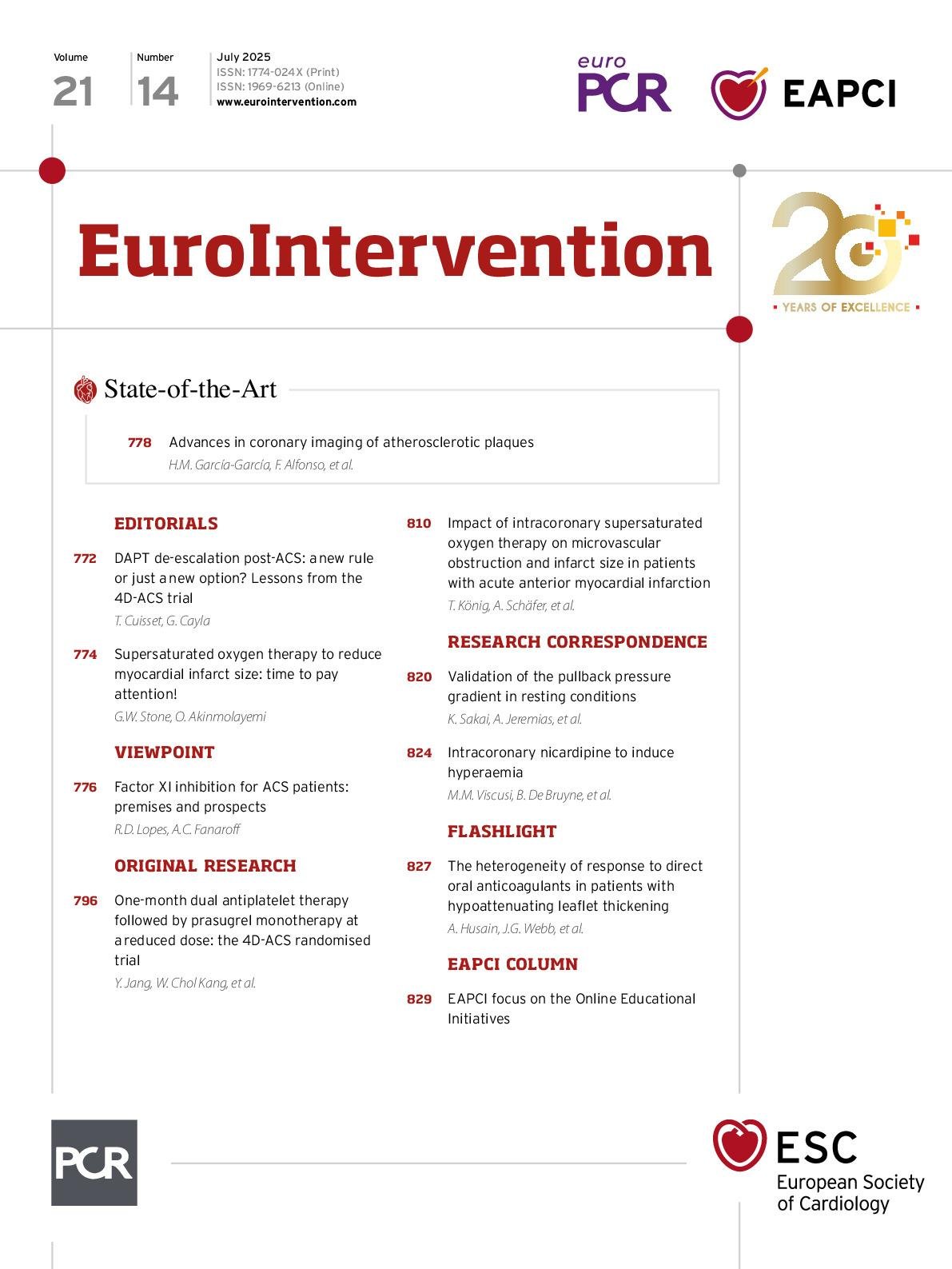What is your interest? Plaque pathology? The latest DAPT regimens? Comparing approaches to FFR or PPG? We’ve got all the bases covered in this latest summer edition of our Journal!
Imaging of atherosclerotic plaques
In this state-of-the-art, Hector M. Garcia-Garcia, Fernando Alfonso, and colleagues delve into the world of plaque pathology and how intravascular imaging can be used to identify and characterise the components of plaque and their phenotypes. Their proposition of a new imaging-based nomenclature for high-risk plaque characteristics is preceded by a natural history of plaque and followed by a review of pharmacological trials that have used different imaging methods to study the evolution and morphology of plaque.
Low-dose prasugrel following one-month dual antiplatelet therapy in acute coronary syndromes
In one of the most discussed trials presented at EuroPCR 2025, Youngwoo Jang, Woong Chol Kang, and colleagues evaluate the safety and efficacy of a 1-month prasugrel-based dual antiplatelet regimen followed by reduced-dose monotherapy in acute coronary syndrome patients receiving a drug-coated stent. This strategy reduced the primary endpoint, a 1-year net adverse clinical events endpoint, by 49%, primarily driven by a 77% reduction in bleeding events. This article is accompanied by an editorial by Thomas Cuisset and Guillaume Cayla.
Supersaturated oxygen therapy in patients with acute anterior myocardial infarction
Tobias König, Andreas Schäfer, and colleagues investigate whether supersaturated oxygen (SSO2) therapy impacts microvascular obstruction and final infarct size in first-time, haemodynamically stable, acute anterior myocardial infarction patients. Twenty patients receiving 60 minutes of SSO2 therapy after PCI were compared with the same number who did not receive it. After evaluation, with multimodal imaging strategies, those patients receiving SSO2 therapy demonstrated significantly reduced microvascular obstruction and final infarct size. Gregg W. Stone and Oludamilola Akinmolayemi contribute an editorial on this article.
Resting pullback pressure gradient
In a research correspondence, Koshiro Sakai, Allen Jeremias, and colleagues question whether resting pullback pressure gradients (PPG) could be a practical alternative to hyperaemic PPG for assessing the patterns of coronary artery disease. Their prespecified subanalysis of the PPG Global Registry demonstrated a strong correlation and agreement in pattern classification between resting and hyperaemic PPG.
Factor XI inhibition in ACS
In a viewpoint, Renato D. Lopes and Alexander C. Fanaroff discuss the potential of factor XI/XIa inhibitors, and whether they can truly decouple haemostasis from thrombosis.
Nicardipine and coronary hyperaemia
A second research correspondence compares intracoronary nicardipine with intracoronary papaverine for the measurement of fractional flow reserve and PPG. For authors Michele Mattia Viscusi, Bernard De Bruyne, and colleagues, nicardipine proves to be a promising alternative to papaverine as it induces maximal, steady-state hyperaemia with a significantly longer hyperaemic plateau.

